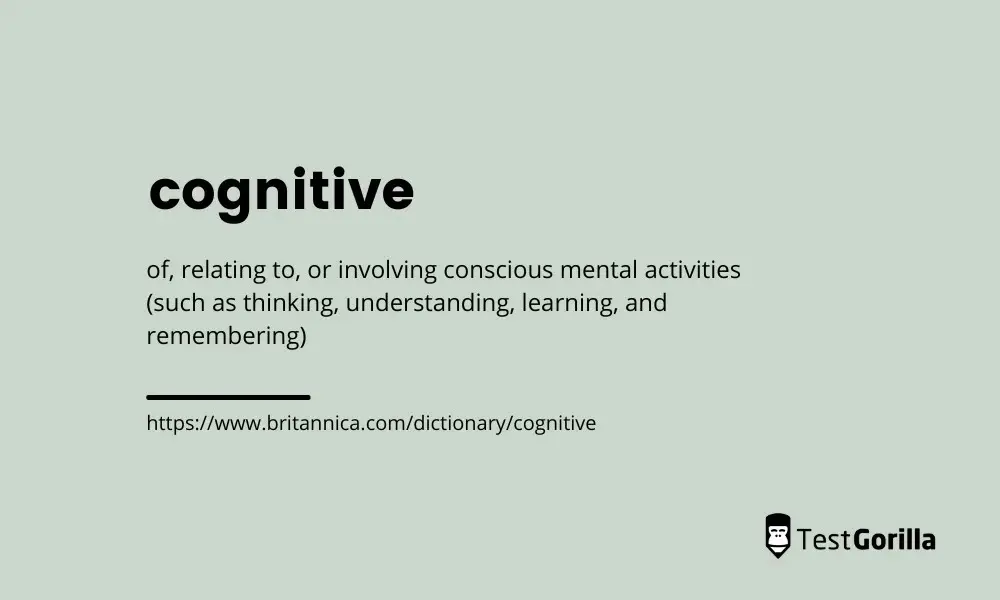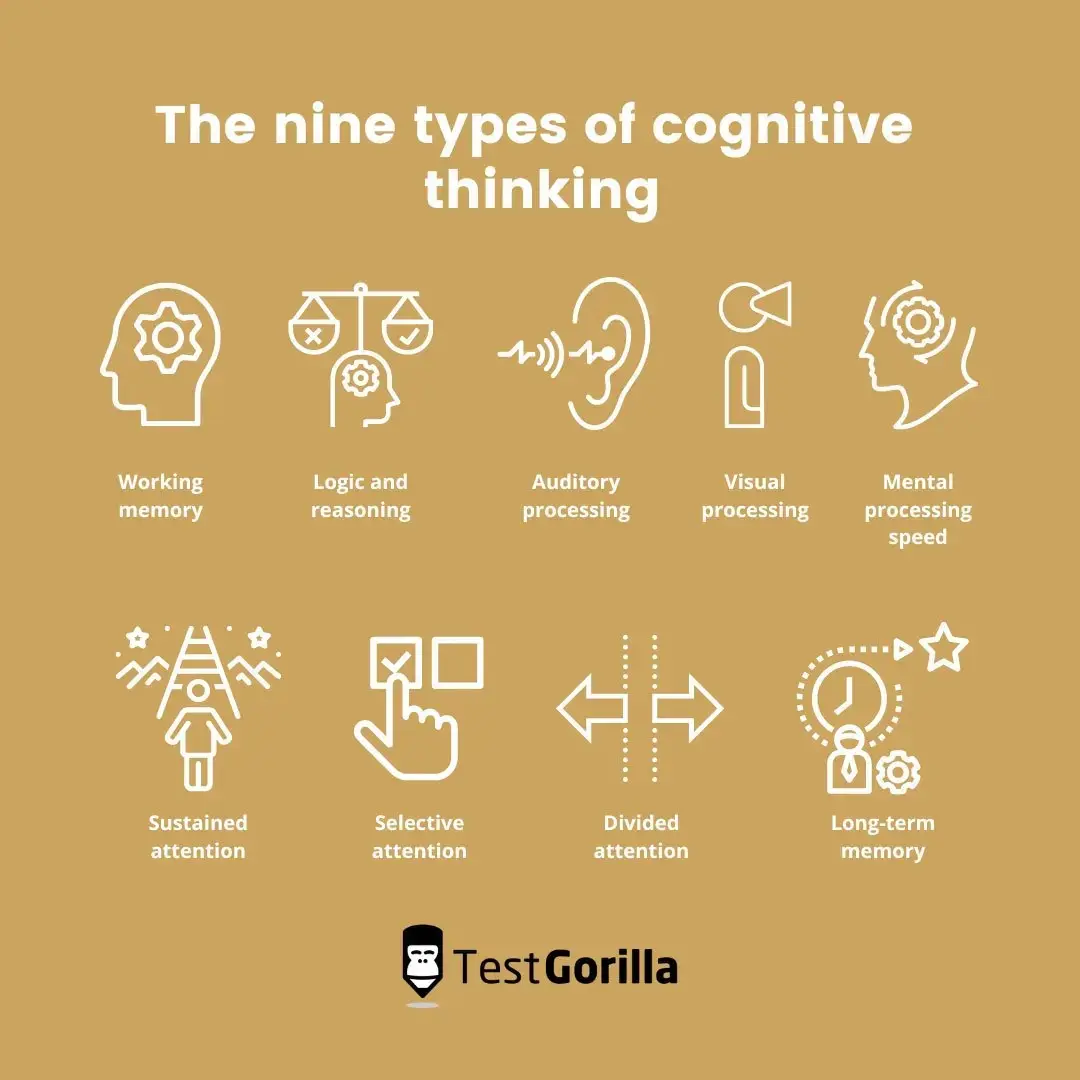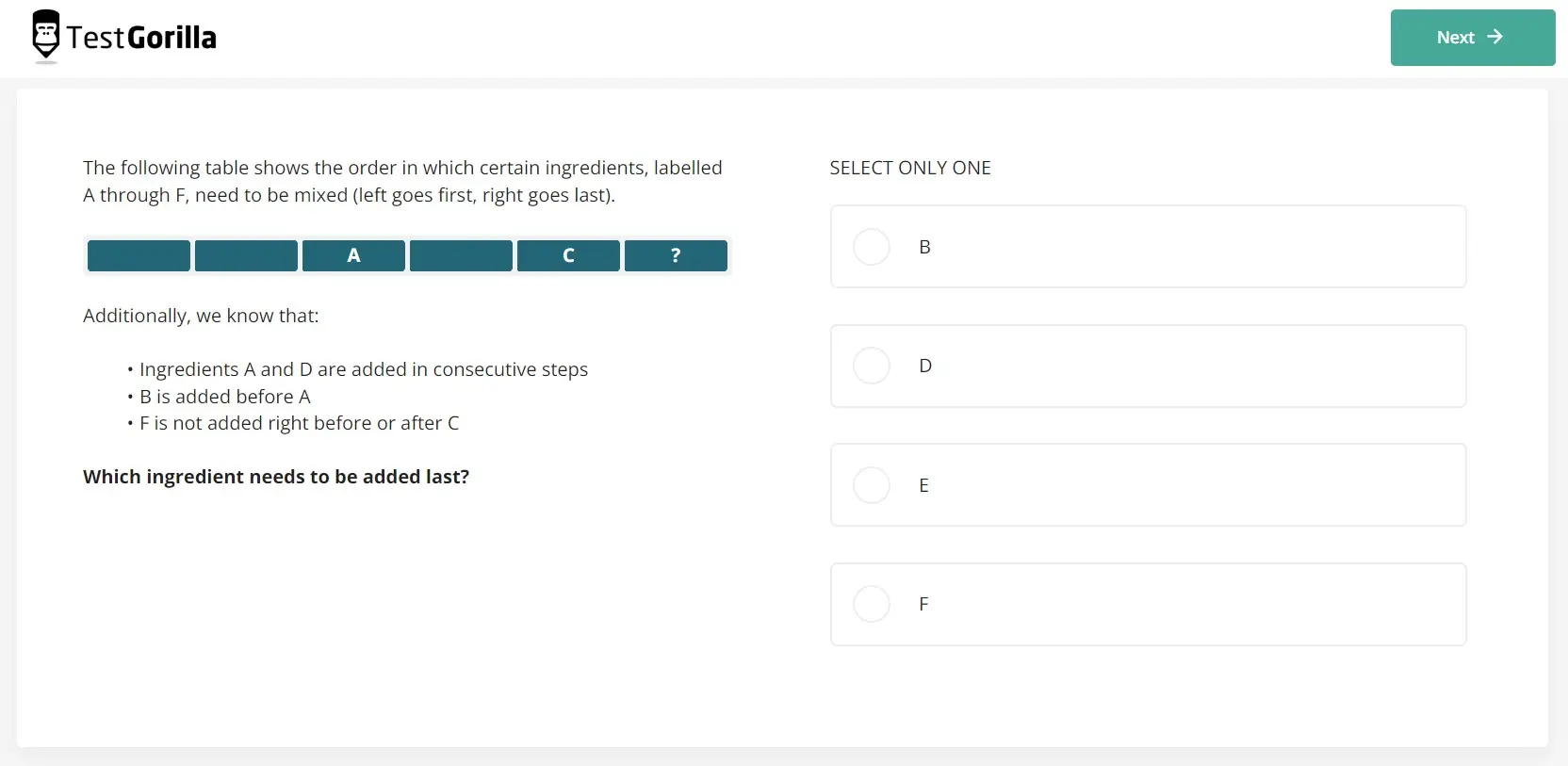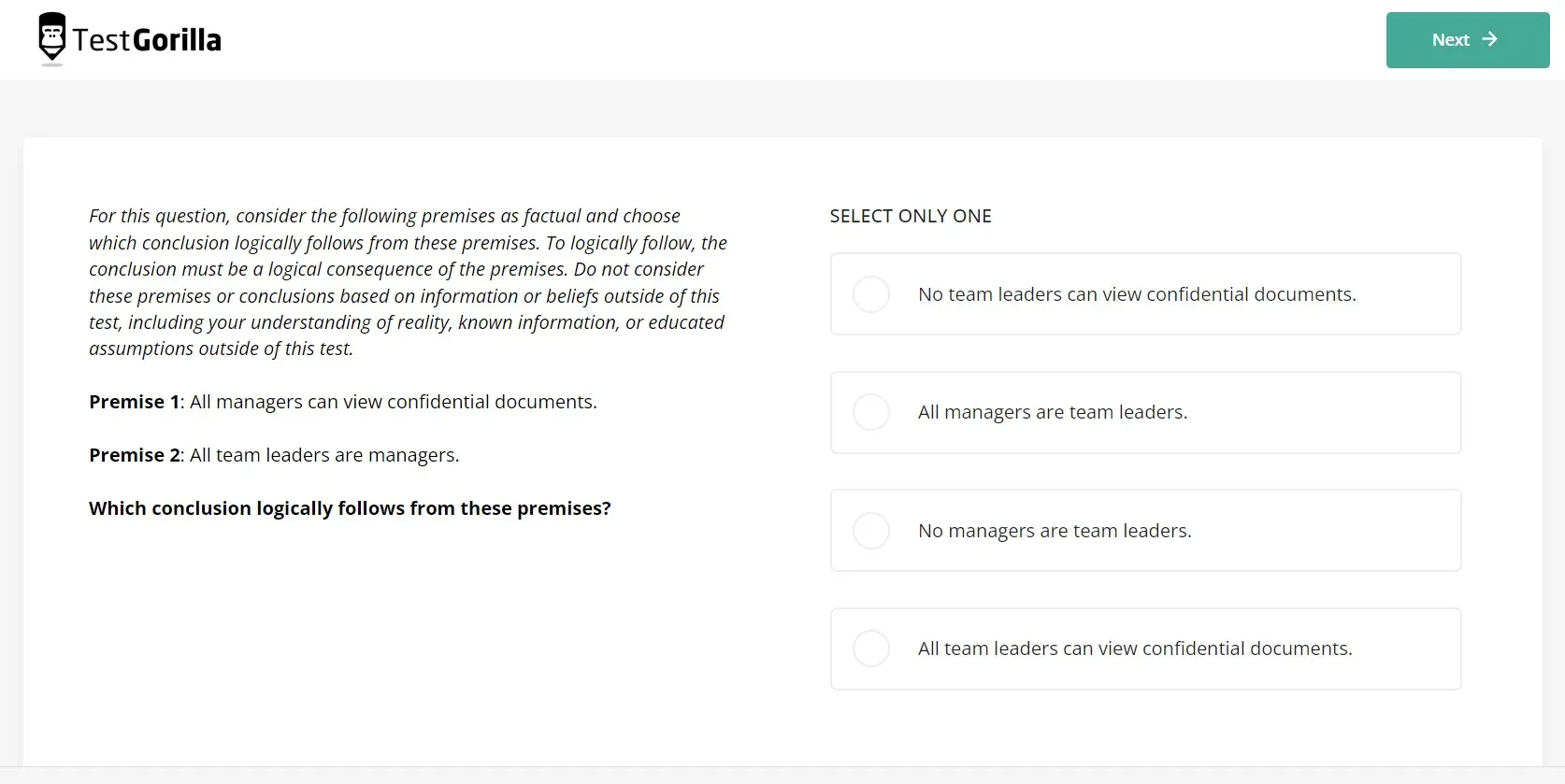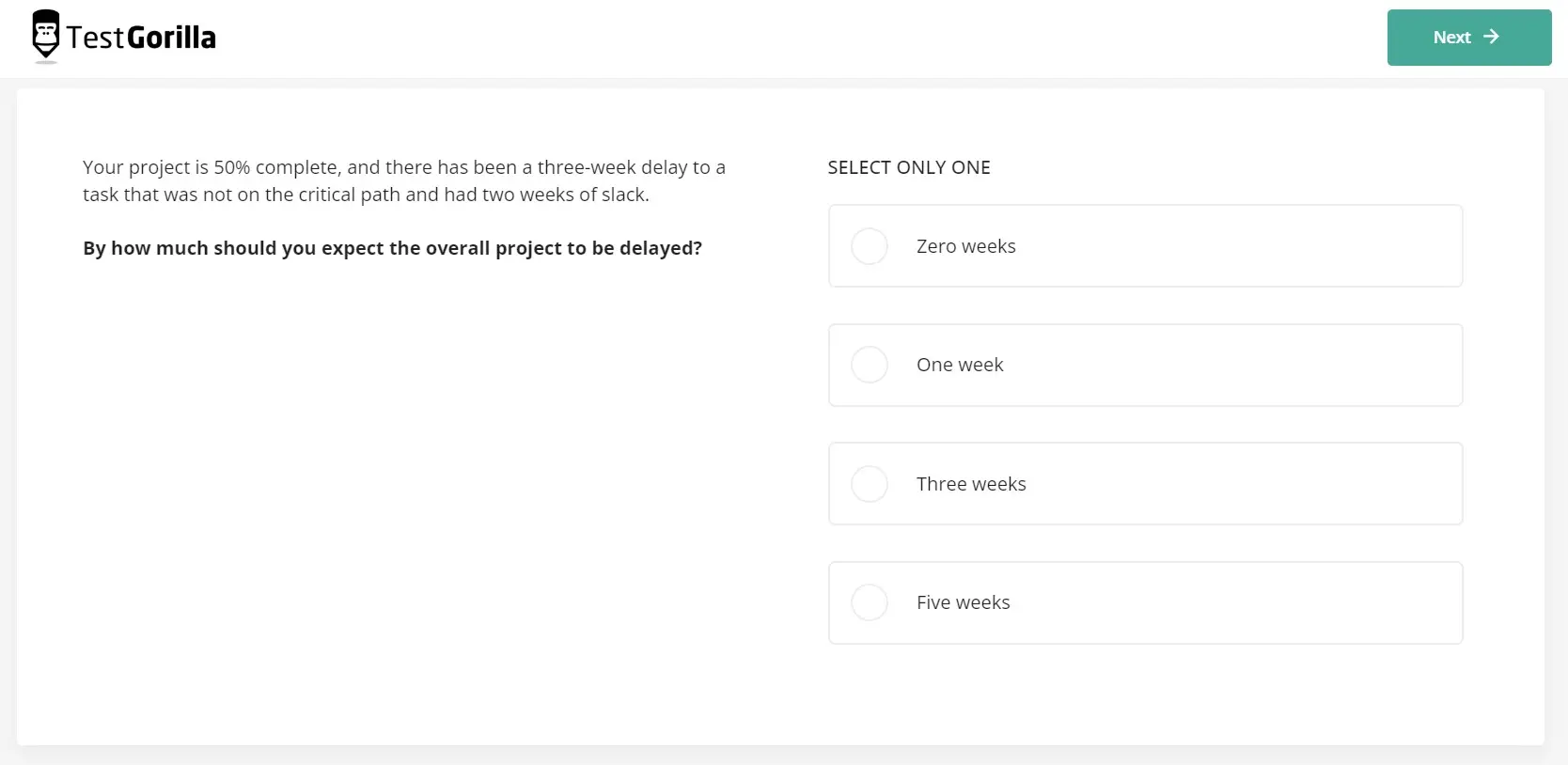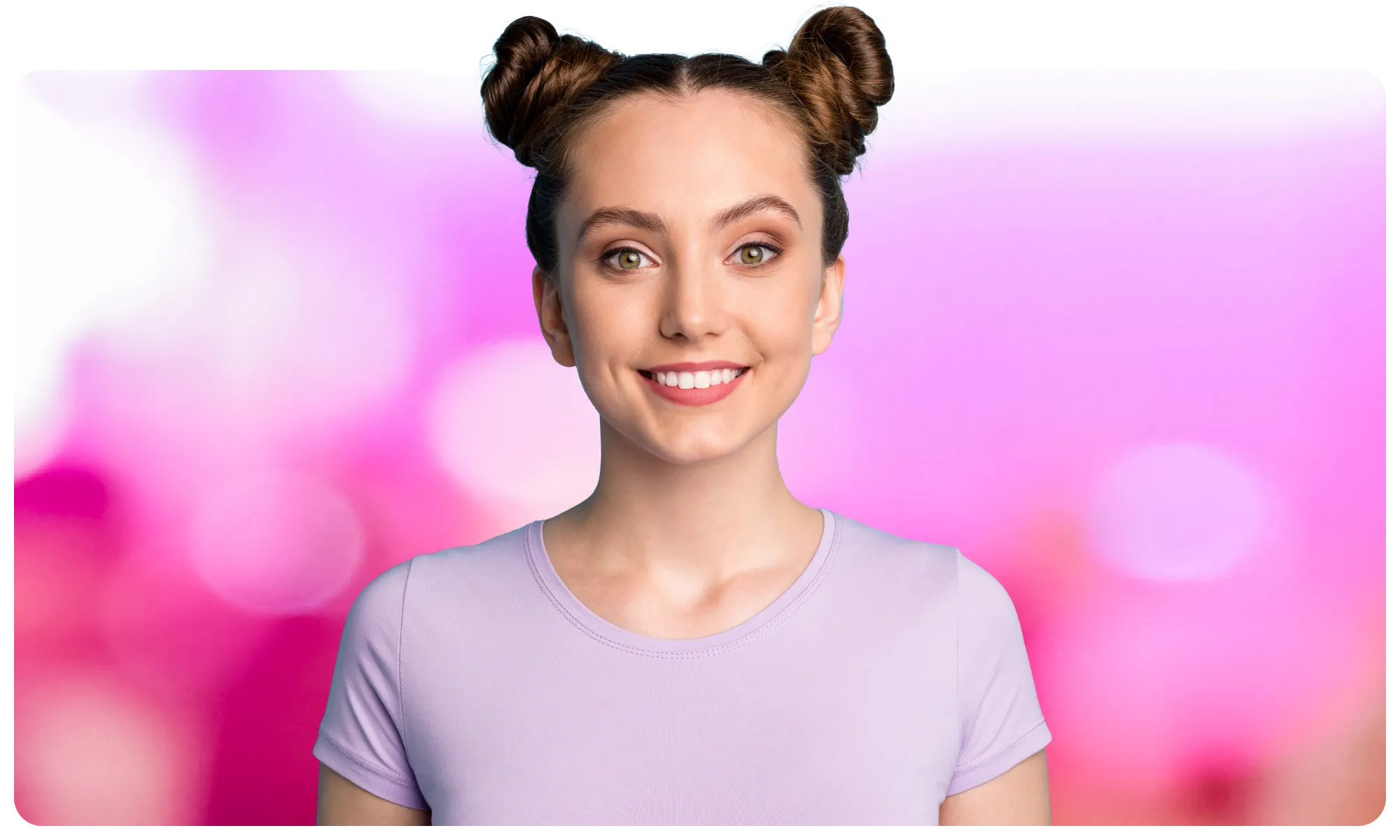Traditional hiring approaches fall short when you’re searching for candidates with unique skill sets to drive your company’s success. One such skill is cognitive thinking, which HR recruiters often struggle to assess effectively.
You can overcome this hurdle with cognitive ability tests, which help you redefine talent acquisition and find the best talent.
In this article, we explore nine different cognitive thinking definitions, discuss how to test candidates or current employees for mental abilities, and give you some cognitive thinking examples.
Table of contents
What is cognitive thinking?
Cognitive thinking is the mental process people use to learn, reason, read, think, and focus. This cognitive psychology notion includes skills like attention, memory, understanding, and critical thinking, which help people effectively turn information into knowledge in their everyday lives.
Each of your cognitive skills plays an important role in cognitive development and how your brain deals with different scenarios. If just one of your cognitive abilities is weak, it affects how well you pick up new information, remember it, and use it.
Cognitive science looks at brain structure from a healthcare point of view, trying to understand human cognition and brain health. Neuroscience also deals with metacognition, intentionality, and learning processes.
What cognitive thinking examples in the workplace help workers be more productive?
Examples of cognitive thinking skills, such as focused attention, memory recall, retention, and analytical reasoning, are crucial for interpreting data, remembering goals, and paying attention during meetings. They support integrating new information with existing knowledge, solving problems efficiently, planning, and innovating.
Thinking cognitively is also crucial for prioritizing tasks, adapting to new challenges, and communicating effectively, which are important for a productive and collaborative environment.
Now that you have a better idea of why cognitive thinking is important, let’s explore different cognitive thinking examples.
Cognitive thinking definitions: What are cognitive thought processes?
Cognitive thought processes form the foundation of how we perceive, interpret, and interact with the world. They encompass various mental activities, from basic information processing to problem-solving and creative thinking.
Experts group different cognitive thinking definitions into nine categories:
1. Sustained attention
Sustained attention is a cognitive thought process that lets you focus on one task for a long time.
Research suggests that there are certain limitations to the sustained attention ability, so overdoing it results in mental fatigue and anxiety, which can sabotage the cognitive thinking process and decrease productivity.
Typical signs of mental fatigue include making simple errors, lack of attention, and irritability. Experiencing these symptoms leads to impaired cognitive thinking, meaning that focusing on one task becomes too difficult for your brain to sustain.
2. Selective attention
Selective attention is the ability to focus on a single task even when other tasks need doing.
Information from multiple channels often threatens to overwhelm our cognitive thinking, meaning that we need a way to distinguish important information effectively.
Those who can filter information and selectively prioritize the most important tasks are more productive and successful at work than those who struggle with distractions.
This cognitive process is also known as “the cocktail party effect” because it refers to the ability to listen to only one conversation in a busy restaurant or bar filled with many other people talking and moving about.
3. Divided attention
Divided attention or multitasking is a cognitive thinking process that helps you retain information while completing more than one task at a time.
Although divided attention can help you do today’s tasks while planning future ones, there is evidence that chronic multitasking reduces productivity by 40%.
Another problem with heavy multitasking is that it makes it hard to filter relevant information, which results in worse selective attention.
Although focusing on a single task ensures higher productivity and quality of work, sometimes you can’t avoid multitasking. You can make it easier by pairing certain tasks, prioritizing tasks by urgency and complexity, allocating specific time blocks for each one, and minimizing distractions to maintain focus.
4. Long-term memory
This cognitive thinking process refers to recalling information from the past, whether that was a few hours or five years ago.
This type of memory, also called “reference memory,” has an unlimited capacity, which means the information can stay in your brain indefinitely.
Long-term memory helps people remember the main points of past meetings without having to look them up. It also enables you to use advanced software functions you haven’t used in a long time or remember your workplace or educational training and apply it to current tasks.
5. Working memory
This cognitive thought process, also known as short-term memory, helps you retain information while using it. For example, you can quickly memorize a new PIN and then involuntarily forget it shortly after you’ve been to the ATM because you no longer need it.
Short-term memory skills help you remember what you discussed in a recent conversation.
Unlike long-term memory, working memory is limited. For most people, it stops being effective after taking in between five and nine pieces of information, which is known as Miller’s law.
This principle is important for understanding cognitive load and designing effective communication, employee education, and workload distribution strategies.
6. Logic and reasoning
Logic and reasoning help you solve problems and generate ideas. You use these cognitive thinking processes when analyzing a situation or problem to develop potential solutions.
Cognitive thinkers gather all the information they can, examine the facts carefully, and then decide on the best solution based on their findings.
Employees with strong logic and reasoning contribute to the company’s success by improving efficiency, increasing adaptability, and driving innovative decision-making.
You can use our Problem Solving test to identify cognitive thinkers who can respond well to complex situations. It is particularly important for administrative assistants, project managers, planners, and hospitality or sales workers.
Unlock the power of cognitive skills testing with TestGorilla. Book your live demo today!
7. Auditory processing
The cognitive thinking definition of auditory processing refers to how your brain makes sense of the information you hear. Auditory processing works by blending, analyzing, and segmenting sounds, which supports active listening and communication skills.
These skills are important because poor communication reduces trust in management and their team for 40% of employees.
However, certain conditions can affect auditory processing, which can cause issues in the workplace.
When spoken word is the only way of interacting at work, someone with a hearing disorder can have difficulty understanding the conversation and struggle to answer questions on the spot. That’s why they often prefer communicating through email or apps such as Slack.
If you want to support inclusive, bias-free hiring, you can use our Communication test to evaluate candidates’ skills in communicating clearly and effectively in a professional setting.
The test assesses written and verbal communication, nonverbal cues, and active listening. That way, you can determine a candidate’s strengths and weaknesses in communication.
If you want to use TestGorilla’s Communication test in your hiring process, sign up for a free account.
8. Visual processing
This cognitive process refers to how well you interpret images and text. Strong visual processing abilities help you analyze designs, spot errors in images or text, read documents, and make sense of visual representations of data, such as graphs and tables.
These cognitive thinking skills are important for graphic designers, architects, editors, data analysts, UI/UX designers, and professional photographers.
In addition, good visual processing aids many other roles because it helps people catch minor errors and notice small details while considering visual or textual information.
That’s why you can use our Attention to Detail (Visual) test to help you find candidates who perform well at processing different types of visual information.
9. Mental processing speed
This final cognitive thinking definition refers to how quickly and accurately you can perform tasks. It’s somewhat of a gray area of cognitive thinking, meaning that a person could be able to handle complex cognitive tasks but need a long time to complete them.
Those who have a high mental processing speed can interpret data quickly and accurately, but a slower processing speed has nothing to do with cognitive intelligence.
Those with slower processing speeds can suffer in the workplace due to time-limited tasks. Because of that, a supportive supervisor or manager can greatly reduce anxiety by giving them tasks that aren’t limited by time or extra time to do the job.
5 tips on how to improve cognitive thinking
Now that we’ve seen the nine cognitive thinking examples, let’s cover the practical tips for supporting thinking cognitively to meet the various challenges of the modern workplace.
1. Prioritize physical exercise
Regular physical activity boosts blood flow to the brain, which supports mental health, stimulates new neural connections, and releases growth factors beneficial for cognitive functions.
As a result, exercise benefits memory, concentration, and cognitive thinking in general.
Here’s how you can incorporate physical activity into your busy schedule:
Cycle, walk, or part-walk to work
Use breaks for quick stretches, desk yoga, or mini workouts
Use a standing desk to reduce sedentary time
Suggest walking meetings for one-on-ones or small groups to get extra steps in while discussing business
Block out time in your calendar for exercise, treating it as an important meeting you can’t skip
Organize or participate in workplace fitness challenges to encourage a healthy, active culture
2. Reduce stress
Chronic stress can impair cognitive functions such as memory, attention, and decision-making. Unfortunately, 77% of employees have experienced work-related stress and burnout in their current job.
To reduce stress in the workplace and boost cognition and thinking, you can:
Incorporate small blocks of time for mindfulness and meditation
Practice deep breathing exercises or guided relaxation techniques during breaks
Take short, frequent breaks throughout the day to step away from your work, stretch, or take a brief walk
Prioritize tasks and set realistic deadlines to avoid last-minute pressures
Customize your workspace with plants, photos, or calming colors to create a more relaxing environment
Build a support network at work
Focus on single tasks instead of juggling multiple projects at once
3. Engage in continuous learning
Learning new things keeps the human brain engaged, which supports cognitive thinking and adaptability. That’s because learning stimulates neuroplasticity, which is the brain’s ability to form new connections. This process is vital for cognitive functions such as problem-solving, memory, and creativity.
Making continuous learning a part of your routine can help you become a better cognitive thinker. Here’s how:
Identify specific skills or new knowledge areas you want to develop and set clear, achievable goals
Use online courses, webinars, and tutorials to learn at your own pace
Read industry-related materials, books, or articles to stay updated with the latest trends and insights
Engage with relevant professional communities or forums to exchange knowledge and learn from peers
Participate in workshops, seminars, or conferences to gain new insights and skills
Promote a culture of learning by sharing insights with colleagues
4. Incorporate brain-training exercises
Brain-training exercises challenge the mind, improve mental agility, and enhance cognitive thinking. Regularly engaging in these exercises can lead to better cognitive performance.
You can try these examples of cognitive thinking exercises:
Use brain-training apps that offer a variety of puzzles and games designed to target specific cognitive skills
Incorporate puzzles like crosswords, Sudoku, or logic puzzles into your daily routine
Practice memory exercises, such as recalling the details of your day in reverse order or memorizing lists
Engage in group activities like escape rooms or strategy-based board games
Learn new skills such as a new language, instrument, or sport
5. Connect with others
Engaging in meaningful conversations, collaborative problem-solving, and social interactions can stimulate brain function. According to a recent meta-analysis published in The Lancet, social interactions also help slow cognitive decline, like Alzheimer’s disease.
Maintaining strong professional relationships and networks can lead to a more dynamic, innovative, and cognitively stimulating working environment.
Examples of cognitive thinking social activities include participating in collaborative projects, attending networking events, using lunch breaks to connect with coworkers, participating in mentorship programs, and joining interest groups.
How to test and assess cognitive thinking skills: A 6-step process
At TestGorilla, we offer a wide range of cognitive ability tests to measure the cognitive thinking skills of your candidates. You can use one specific test or combine up to five different ones for a more comprehensive assessment.
If you’re unsure how to use cognitive ability tests in your hiring process, here is a quick guide.
1. Choose the right tests
Find the most relevant cognitive ability tests in our test library based on the needs of the specific role you’re recruiting for.
For example, you can use our Critical Thinking test to find candidates who can:
Use deduction
Analyze arguments
Recognize assumptions
Make logical connections
This test lets you gauge your candidates’ critical thinking abilities before you hire them.
Companies like Digital Care, which had issues finding candidates with the right skills in the past, use this test to avoid costly mis-hires.
If you want to see more questions from this test, check out the Critical Thinking test preview.
2. Create a baseline
You can’t accurately evaluate your candidates’ cognitive ability scores without a benchmark to compare them. Ask your current high-performing employees if they want to take the tests, and use their scores to create a baseline for comparison.
3. Test your candidates
One of the major benefits of using tests for hiring is that they speed up the screening process and are more accurate than traditional hiring methods.
You should combine cognitive ability tests with role-specific and personality assessments to find the candidates most suited for the role.
For example, if you want to hire a project manager, you can test candidates’ cognitive thinking with our Problem Solving and Critical Thinking tests.
You can also use a role-specific test, such as the Project Management test, to see how they manage project schedules, budgets, and communication.
4. Evaluate the results
Now, it’s time to assess how each candidate scored against the baseline you created. If a candidate is too far below the benchmark, you can eliminate them. If they meet the benchmark or score even higher, put them on your interview list.
5. Interview the top-scoring candidates
Interview each candidate who passed your initial benchmark. If there were any specific weak or strong points in the candidate’s test, ask questions that dig deeper into those areas during the interview.
You should use structured interviews with predefined cognitive ability interview questions to offer a more reliable and objective way to assess candidates. That supports a fair and effective selection process.
6. Make a decision
Use the results of the cognitive ability test in combination with other methods of candidate evaluation, including interviews and reference checks.
You should never use these tests alone because you can overlook critical hard and soft skills that are equally important for an informed hiring decision.
Evaluate cognitive thinking skills with TestGorilla
Cognitive thinking is a multifaceted process crucial for thriving in a workplace. By understanding cognitive thinking, how to improve these skills, and how to assess cognition and thinking, you can find candidates who can support your organization’s success.
Book a live demo to learn how to use TestGorilla to evaluate cognitive thinking skills.
Take a product tour to discover why businesses use our talent assessments to improve their hiring processes.
Or jump straight in, sign up for a free account, and try our free cognitive assessments, including the Problem Solving test.
Cognition and thinking FAQs
If you still have questions about thinking cognitively, find some answers below.
Is cognitive thinking a skill?
Cognitive thinking is a mental process that encompasses various cognitive skills, such as problem-solving, decision-making, memory, and learning. It involves the ability to process information, reason, reflect, and apply logic. Cognitive thinking is crucial for overcoming complex challenges and making informed decisions, which is important in personal and professional contexts.
What is cognitive thinking and critical thinking?
Cognitive thinking is the mental process involved in gaining knowledge and comprehension. It includes skills like memory, judgment, and problem-solving. Critical thinking is a more specific aspect of cognitive thinking that is important for analyzing facts to form a judgment. It’s the active application of mental skills for evaluation, analysis, and synthesis of information, often leading to better decision-making.
What are the 4 types of cognitive processing?
Perception: Organizing and interpreting sensory information to understand the environment
Attention: Focusing on specific stimuli or tasks while ignoring distractions in our environment
Information processing: Transforming sensory input into meaningful information, crucial for decision-making and problem-solving
Memory: Encoding, storing, and recalling information when needed, enabling us to learn and apply knowledge in various situations
How can I improve my cognitive thinking?
Engage in brain-stimulating activities like puzzles
Stay physically active to improve blood circulation to the brain
Practice stress-reducing techniques such as meditation
Socialize with others to sharpen mental sharpness
Become a life-long learner, building new skills and hobbies to keep your brain engaged
Prioritize sleep for brain restoration
Adopt a healthy diet to support cognitive health
Related posts
Hire the best candidates with TestGorilla
Create pre-employment assessments in minutes to screen candidates, save time, and hire the best talent.
Latest posts
The best advice in pre-employment testing, in your inbox.
No spam. Unsubscribe at any time.

Hire the best. No bias. No stress.
Our screening tests identify the best candidates and make your hiring decisions faster, easier, and bias-free.
Free resources
This checklist covers key features you should look for when choosing a skills testing platform
This resource will help you develop an onboarding checklist for new hires.
How to assess your candidates' attention to detail.
Learn how to get human resources certified through HRCI or SHRM.
Learn how you can improve the level of talent at your company.
Learn how CapitalT reduced hiring bias with online skills assessments.
Learn how to make the resume process more efficient and more effective.
Improve your hiring strategy with these 7 critical recruitment metrics.
Learn how Sukhi decreased time spent reviewing resumes by 83%!
Hire more efficiently with these hacks that 99% of recruiters aren't using.
Make a business case for diversity and inclusion initiatives with this data.

